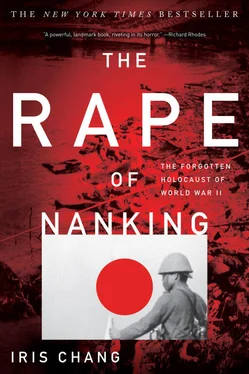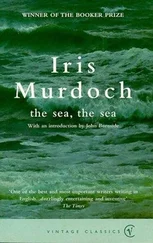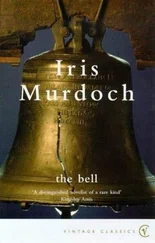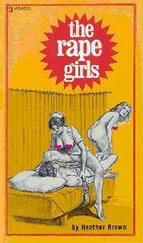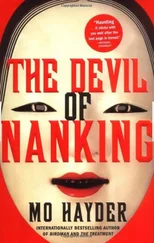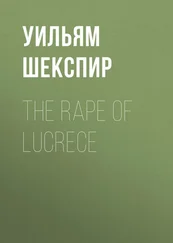Durdin, Steele, and McDaniel left only a few days after the massacre began, but in the brief time they were in Nanking they made an enormous impact. Not only did they write riveting stories that were splashed across the biggest and most prestigious newspapers in the United States, but they also joined the International Safety Zone Committee in trying to save lives.
The Rape of Nanking forced the reporters out of their normal role as neutral observers and into the war drama as full-fledged participants. Sometimes they starred in their own stories by choosing to protect Chinese citizens from the Japanese invaders. For instance, C. Yates McDaniel assumed the responsibility of guarding the Chinese servants of the U.S. embassy. During the massacre most were so frightened they refused to leave the building even for water, and McDaniel spent hours filling buckets with well water and lugging them back to the embassy for the servants to drink. He tried to find their missing relatives (often retrieving only their bodily remains) and also chased away Japanese soldiers who tried to break into the embassy.
The reporters even tried to save people who were clearly beyond saving, if only to comfort those who were minutes away from death. During the massacre Durdin encountered a Chinese soldier lying on the sidewalk with his jaw shot away and his body bleeding. The soldier held out his hand, which Durdin picked up and held. “I didn’t know where to take him or what to do,” Durdin remembered years later. “So I just, stupidly, decided to do something. I just put a five-dollar bill in his hand. Which is utterly useless to him, of course, but anyway, somehow I felt the impulse to do something. He was just barely alive.”
On December 15, most of the reporters left Nanking for Shanghai to file their stories. Their last day in the city was grisly. On the way to the waterfront, the reporters literally had to drive over several feet of bodies under the Water Gate, where dogs were already starting to gnaw on the corpses. Later, as they waited for their ship to arrive, they saw the Japanese military line up one thousand Chinese men, force them to kneel in small groups, and shoot each of them in the back of the head. During the execution some of the Japanese were laughing and smoking, as if they greatly enjoyed the entire spectacle.
The AP’s McDaniel stayed in Nanking a day longer before boarding a destroyer for Shanghai. On December 16, his last day in the ruined Chinese capital, he saw more corpses and passed a long line of Chinese men with their hands tied. One of them broke away from the group, dropped on his knees, and begged McDaniel to save him from death. “I could do nothing,” McDaniel wrote. “My last remembrance of Nanking—dead Chinese, dead Chinese, dead Chinese.”
There were also two American newsreel men near Nanking who risked their lives to film the bombing of the Panay. During the bombing Norman Alley of Universal and Eric Mayell of Fox Movietone happened to be on board and obtained superb footage of the action. Though they survived the attack unscathed (Alley emerged from the bombs and machine-gun fire with only a nicked finger and a bullet-perforated hat), another journalist was not so lucky. A splinter hit the Italian correspondent Sandro Sandri in the back of his eye when he followed Alley up a stairway on the Panay, and he died only hours later.
While hiding with the surviving Panay passengers under the riverbank reeds, Alley wrapped his film and Mayell’s with canvas and buried it under the mud when he thought the Japanese were coming ashore to kill them. Later the film was safely unearthed and shipped to the United States, where parts of the newsreel footage of the event ran in movie houses across the country.
The sinking of the Panay caused more of an uproar in the United States than all the wholesale rape and slaughter in Nanking combined. On December 13, President Franklin D. Roosevelt announced that he was “shocked” at the bombing and demanded immediate compensation from Emperor Hirohito. A few days later, when the exhausted survivors finally reached civilization, the public response only grew worse. Filthy, cold, and wearing only blankets, Chinese quilts, and tatters of clothing, some of the survivors were still in shock or near death. Their stories, along with their photographs, soon appeared in every major newspaper in the country under headlines like “Panay Victims Under Japanese Fire for Full Hour,” and “Butchery and Looting Reign in Nanking.” When Alley’s and Mayell’s footage hit the theaters, it only aroused more outrage and anti-Japanese sentiment among American audiences.
The moment the foreign correspondents left Nanking, the Japanese sealed off the city to prevent other reporters from coming in. George Fitch witnessed the beginning of this on December 15, the day he drove some of the foreign correspondents out of the city to the riverfront so that they could board a gunboat for Shanghai. When Fitch tried to drive back into Nanking from Hsiakwan, a Japanese sentry stopped him at the gate and absolutely refused to let him reenter. Even Mr. Okamura, a member of the Japanese embassy from Shanghai who accompanied Fitch, was unable to persuade the man to let them through: “The embassy cuts no ice with the army in Japan.” In the end Okamura had to take one of the cars to military headquarters to get a special pass for Fitch.
When the Japanese finally permitted a few foreigners to enter the city, they carefully controlled their movements. In February they allowed a few American naval officers to go ashore in Nanking, but only when accompanied by Japanese embassy representatives in a Japanese embassy car. As late as April the Japanese high command prevented most foreigners from freely leaving or entering the city.
To cover up the nauseating details of their military outrages, the Japanese even impeded the return of foreign diplomats to Nanking. But in the end they proved unsuccessful in hiding the truth—especially from the Germans and the Americans.
FOREIGN INTELLIGENCE ON THE RAPE OF NANKING
Hitler’s government soon learned the Japanese motives for the delay. “The assumption I made in my previous report that the Japanese delayed our return in order to have no official witnesses of the atrocities has been confirmed,” a German diplomat reported to Berlin in January. “Once the intention of the foreign representatives to return to Nanking had been made known, according to Germans and Americans who were there, there were feverish cleanup efforts undertaken to remove the evidence of the senseless mass murders of civilians, women and children.”
The American government also knew what the Japanese were trying to hide. A machine cipher had protected the Japanese Foreign Office’s high-level diplomatic messages, but by 1936 cryptanalysts from the U.S. Army’s Signal Intelligence Service had cracked the Japanese code, which the Americans dubbed “RED.” American intelligence was thus able to intercept and read secret messages between the Japanese leadership in Tokyo and their representatives in Washington, D.C., during the Rape of Nanking. On December 26, 1937, Foreign Minister Hirota Koki sent one such message to Japanese Ambassador Saito Hirosi in Washington; it emphasized the need to stonewall the American embassy staff to prevent their immediate return to Nanking. “If they do return and receive unfavorable reports on the military’s activities from their own nationals and if the diplomats, on receipt of such complaints, forward the reports to their home countries, we shall find ourselves in an exceedingly disadvantageous position,” the message read. “We believe, therefore, that the best policy is to do our utmost to hold them here as long as possible. Even if this should cause some hard feeling, we believe that it would be better than running the risk of a clash on the scene.”
Читать дальше
